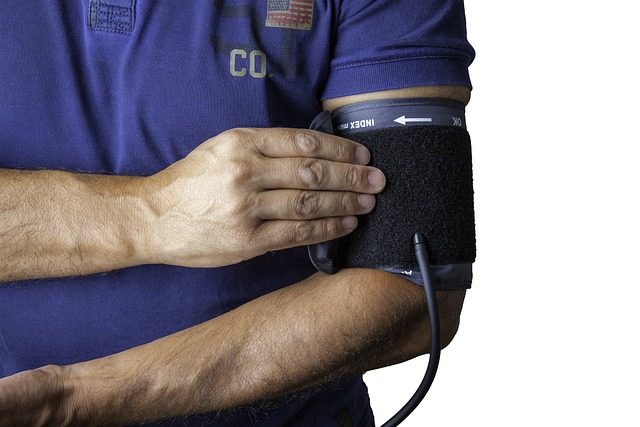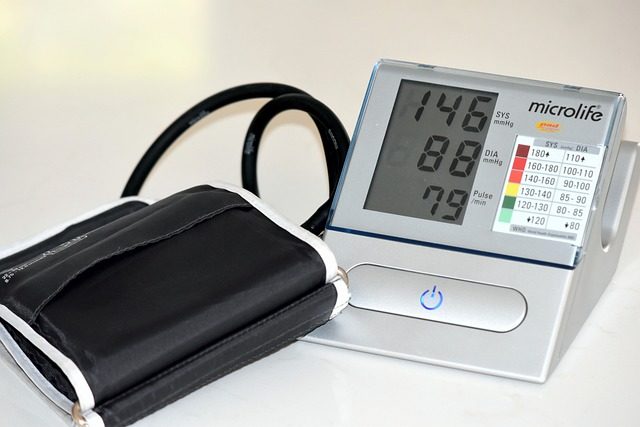In today’s fast-paced world, understanding our body’s ability to adapt and perform under various conditions is more critical than ever. Heart Rate Variability (HRV) is a powerful tool that can provide valuable insights into our overall health, fitness, and well-being. By grasping the science behind HRV and learning how to optimize it through lifestyle choices, stress management, and exercise, we can unlock our full potential and lead healthier, happier lives.
Table of Contents
Key Takeaways
Heart Rate Variability (HRV) is a measure of our body’s homeostasis, adaptability and overall health which can be assessed through time-domain, frequency-domain and non-linear measurements.
HRV is greatly impacted by lifestyle choices, stress levels & physical fitness. It can be improved with mindfulness practices, exercise & sleep hygiene.
Wearable monitors & smartphone apps provide insights into HRV to help individuals manage their health for enhanced well being.
The Science Behind Heart Rate Variability

HRV is a fascinating physiological phenomenon that reflects the body’s ability to adapt and be resilient. It is a result of the intricate interactions between the autonomic nervous system, neurocardiac function, and various regulatory mechanisms. These complex interactions help maintain our body’s homeostasis, allowing the cardiovascular system to quickly adjust to abrupt physical and psychological demands.
Research has shown that HRV is regulated by the autonomic nervous system (ANS) and is influenced by the intervals between heartbeats. The autonomic, cardiovascular, central nervous, endocrine, and respiratory systems, as well as baroreceptors and chemoreceptors, all play a role in affecting HRV. Therefore, HRV serves as a comprehensive indicator of our overall health and adaptability.
Autonomic Nervous System Balance
The autonomic nervous system (ANS) is divided into two main branches: the sympathetic nervous system and the parasympathetic nervous system. The parasympathetic nervous system, along with its counterpart, plays a crucial role in regulating the body’s response to stress and relaxation, which is essential for HRV.
The hypothalamus processes information, subsequently sending signals throughout the body via the ANS. This can either stimulate or relax various functions, like HRV. When we experience sustained negative signals, it can impair the functioning of the fight-or-flight response, resulting in an increased heart rate. On the other hand, instructing individuals to breathe slowly during heightened stress can activate both branches of the ANS and enhance respiratory sinus arrhythmia.
Maintaining good HRV requires a grasp of the balance between the sympathetic and parasympathetic branches of the ANS. This knowledge provides insights into our body’s stress coping mechanisms and recovery capabilities.
Neurocardiac Function
HRV serves as an indicator of the dynamic processes of the autonomic nervous system and heart-brain interactions, which play a crucial role in overall health and well-being. Autonomic regulation is necessary to maintain cardiovascular health. The modulation of vagal tone plays a vital role in this dynamic regulation..
HRV can be analyzed in different frequency bands, including very low frequency (VLF), low frequency (LF), and high frequency (HF). The LF band reflects baroreflex activity, while the HF band corresponds to heart rate variations related to the respiratory cycle and parasympathetic activity. As our heart beats, slow respiration rates are associated with increased vagal activity. This activity produces oscillations in heart rhythms extending into the LF band.
By understanding the complex relationship between the autonomic nervous system, neurocardiac function, blood pressure, and HRV, we can gain valuable insights into our cardiovascular health, stress response, and overall well-being.
Measuring Heart Rate Variability

Understanding how HRV is measured is crucial to appreciating the insights it offers. HRV can be assessed through time-domain, frequency-domain, and non-linear approaches. Each method provides unique perspectives on the body’s regulatory systems and adaptability.
Time-domain measurements focus on the variability of interbeat intervals, offering insights into overall HRV and specific aspects of autonomic regulation. Frequency-domain measurements, on the other hand, analyze the spectral components of HRV, providing information about the different rhythms and influences on heart rate variability. Lastly, non-linear measurements assess the unpredictability and complexity of HRV, offering insights into the underlying dynamics of the autonomic nervous system.
With a solid understanding of these measurement methods, we can delve deeper into the various factors that influence HRV and how they relate to our health and performance.
Time-Domain Measurements
Time-domain measurements analyze the variability of interbeat intervals, providing valuable information on overall HRV and specific elements of autonomic regulation. Numerous time-domain measurements are employed to quantify HRV, such as:
SDNN
SDRR
SDANN
SDNN Index
RMSSD
NN50
pNN50
HR Max
HR Min
HTI
TINN
These measurements can help evaluate physiological changes in response to various factors, such as stress or physical activity. Lower RMSSD values are related to higher scores on a risk inventory of sudden unexplainable death in epilepsy. This has been further confirmed by the correlation between RMSSD and HF power..
Understanding the various time-domain measurements and their relationship to physiological changes allows us to gain a deeper insight into the factors affecting HRV and how they can be managed to optimize our health and well-being.
Frequency-Domain Measurements
Frequency-domain measurements delve into the spectral components of HRV, offering insights into the various rhythms and influences on heart rate variability. The different frequency bands in HRV, such as VLF, LF, and HF, each have their significance.
The LF band reflects baroreflex activity, while the HF band is associated with heart rate variations related to the respiratory cycle and parasympathetic activity. Understanding the implications of these frequency bands can help us gain a comprehensive view of the factors that impact our HRV and overall cardiovascular health.
Research has revealed that lower levels of Heart-Rate Variability (HRV) power are connected with stressful states like panic, anxiety and worry. This provides an example of how HF power can indicate mental health. By tracking our HRV in these specific frequency ranges, we can better understand our body’s response to various stressors and implement strategies to improve our overall well-being.
Non-Linear Measurements
Non-linear measurements assess the unpredictability and complexity of HRV, offering insights into the underlying dynamics of the autonomic nervous system. Non-linear measurements like:
S
SD1
SD2
SD1/SD2
Approximate entropy (ApEn)
Sample entropy (SampEn)
Detrended fluctuation analysis (DFA) 1
Detrended fluctuation analysis (DFA) 2
are commonly used to index HRV. Several other non-linear measures also exist.
These measurements shed light on the irregularity and complexity within a sequence of interbeat intervals (IBIs) by analyzing successive differences. For example, SD1 measures short-term HRV and is associated with baroreflex sensitivity (BRS) and HF power.
Examining various non-linear measurements helps us comprehend the complex interactions between the autonomic nervous system and HRV, thus giving us a holistic understanding of our body’s adaptability and resilience.
Factors Influencing Heart Rate Variability
Numerous factors influence HRV, such as training, lifestyle, and biological factors. These factors can either enhance or impair the body’s adaptability and resilience, affecting our overall health and well-being.
Subsequent sections will delve into the impact of lifestyle choices, stress levels, and physical fitness on HRV, also discussing practical improvement techniques for enhanced health and performance.
Lifestyle Choices
Healthy habits are crucial for maintaining optimal HRV. Factors such as proper nutrition, hydration, and avoiding excessive alcohol consumption can positively impact HRV. Research has shown that weight gain can negatively affect HRV, while weight loss and dietary modifications may enhance it. Furthermore, omega-3 consumption, either through eating fish or taking fish oil supplements, has been linked to increased HRV.
Conversely, both short-term and long-term alcohol consumption can reduce HRV. In conclusion, maintaining a healthy diet and lifestyle is essential for achieving optimal HRV and overall well-being.
Stress Levels
Chronic stress can negatively affect HRV, resulting in detrimental effects on cardiovascular health and overall well-being. High levels of stress can lead to a decrease in HRV, which indicates a less flexible and adaptive autonomic nervous system response.
Effective stress management techniques, such as mindfulness practices, meditation, and deep breathing, can help improve HRV. By incorporating these practices into our daily lives, we can better manage stress and enhance our body’s adaptability and resilience, thus improving HRV and overall health.
Physical Fitness
Regular exercise and physical activity can enhance HRV, indicating better cardiovascular health and overall well-being. Higher physical fitness has been linked to higher HRV, which is in turn associated with lower cardiovascular risk.
Engaging in regular exercise, such as aerobic activities like running and yoga, can improve HRV. Furthermore, breathing exercises, such as slow deep breathing and Pranayama breathing, may also be beneficial in enhancing HRV.
Incorporating regular physical activity into our daily routines can have a positive impact on our HRV and overall health, helping us maintain a healthy balance in our autonomic nervous system.
How HRV Relates to Health and Performance
HRV is associated with various aspects of health and performance, including cardiovascular health, athletic performance, and mental well-being. By understanding the complex interplay between the autonomic nervous system, neurocardiac function, and various regulatory mechanisms, we can harness the power of HRV to optimize our health and performance.
In the following sections, we will explore the relationship between HRV and cardiovascular health, athletic performance, and mental well-being, highlighting the practical applications of HRV in these areas.
Cardiovascular Health
Higher HRV is generally viewed as an indication of good heart health and cardiovascular fitness. It has been found that individuals with higher HRV have a reduced risk of heart-related issues.
Research has demonstrated a connection between HRV and cardiovascular health. Lower HRV has been associated with an elevated risk of cardiovascular disease (CVD) and the likelihood of having a cardiovascular event. Monitoring and improving our HRV allows us to proactively enhance our cardiovascular health and mitigate the risk of heart-related complications.
Athletic Performance
HRV can be a beneficial asset for athletes, as it can be used to optimize training and recovery, helping them achieve peak performance. Some benefits of HRV for athletes include:
Optimizing training intensity and volume
Monitoring recovery and preventing overtraining
Identifying early signs of fatigue or illness
Improving sleep quality and quantity
Enhancing mental focus and concentration
High HRV has been linked to good health and a high level of fitness, while decreased HRV has been associated with stress, fatigue, and burnout.
Monitoring HRV enables athletes to:
Monitor their performance
Identify signs of physical strain
Adjust their training intensity and volume
Prevent injuries
Maximize their performance
Furthermore, HRV biofeedback training has been shown to have a positive effect on athletes’ performance levels.
Mental Well-Being
Improved HRV is associated with better stress management, emotional regulation, and overall mental health. By implementing mindfulness practices, meditation, and deep breathing exercises, individuals can enhance their HRV and promote better mental well-being.
Research has shown that low HRV may be associated with several psychological implications, such as difficulty in emotion regulation, psychopathological conditions, and impaired social cognition and emotion. By improving HRV, individuals can better manage their emotions and stress levels, leading to enhanced mental health and well-being.
Practical Ways to Improve Heart Rate Variability
Implementing mindfulness practices, engaging in routine exercise, and maintaining optimal sleep hygiene can boost our HRV and overall well-being. These practical methods for improving HRV can help us optimize our health and performance, leading to a happier and more balanced life.
In the following sections, we will explore various strategies for improving HRV, such as mindfulness and stress reduction techniques, exercise and physical activity, and sleep hygiene.
Mindfulness and Stress Reduction Techniques
Mindfulness practices, such as meditation, yoga, and deep breathing, can help reduce stress and improve HRV. These techniques can be easily incorporated into our daily routines, promoting relaxation and better emotional regulation.
Meditation has been shown to have a positive effect on HRV by increasing autonomic tone and impacting the autonomic nervous system. Similarly, yoga and deep breathing exercises can independently raise HRV, helping to improve our overall mental and emotional well-being.
By incorporating mindfulness and stress reduction techniques into our lives, we can effectively manage stress and enhance our HRV, leading to improved overall health and well-being.
Exercise and Physical Activity
Regular physical activity, especially aerobic exercise, can have a positive impact on HRV and overall health. By engaging in regular exercise, such as running, yoga, and deep breathing exercises, we can improve our HRV and overall well-being.
Exercise therapy and regular physical activity have been demonstrated to increase HRV and improve cardiac autonomic regulation in healthy individuals. By incorporating regular physical activity into our daily routines, we can enhance our body’s adaptability and resilience, leading to improved HRV and overall health.
Sleep Hygiene
Prioritizing quality sleep and establishing a consistent sleep schedule can help improve HRV and overall well-being. Research has shown that poor sleep quality and behaviors can negatively impact HRV, while maintaining consistent bedtimes and practicing good sleep hygiene can have a positive effect on HRV.
By focusing on healthy sleep habits, we can ensure optimal HRV and overall well-being. Some strategies for promoting good sleep hygiene include maintaining a regular sleep schedule, creating a comfortable sleep environment, and utilizing relaxation techniques before bedtime.
Learn more, visit 12 Ways to Improve Your Heart Rate Variability (HRV).
Monitoring Your HRV: Devices and Applications
Given our understanding of HRV’s significance for health and performance, having the appropriate tools to monitor and optimize it becomes crucial. Wearable HRV monitors, smartphone apps, and personalized training programs can help individuals track and optimize their HRV for better health and performance.
In the following sections, we will explore various devices and applications for monitoring HRV, such as wearable HRV monitors, smartphone apps, and using HRV data for personalized training and recovery.
Wearable HRV Monitors
Wearable HRV monitors, such as:
WHOOP Strap
Garmin Forerunner
Fitbit Inspire
Apple Watch
provide continuous monitoring of HRV and personalized insights. These devices can help track changes in HRV, allowing individuals to better understand their body’s health trends and make informed decisions regarding their well-being.
These wearable devices typically utilize sensors such as photoplethysmography (PPG) or pulse oximetry to measure heart rate and provide HRV data. By monitoring HRV with these devices, individuals can gain valuable insights into their autonomic nervous system activity, stress levels, and overall health.
Wearable HRV monitors enable individuals to:
Manage their health and performance
Provide understanding of the complex interactions between their body systems
Empower them to make informed decisions to enhance their well-being.
Smartphone Apps
Various smartphone apps can help track and analyze HRV data, offering guidance for improving overall well-being. Popular HRV monitoring apps like Welltory, HRV4Training, and Elite HRV use the phone’s built-in sensors, such as the camera or optical heart rate monitor, to detect and analyze the intervals between heartbeats.
These apps calculate HRV metrics, such as the standard deviation of R-R intervals or frequency domain analysis, to provide insights into the user’s autonomic nervous system activity, stress levels, and overall health. Using these apps, individuals can comprehend their body’s health trends more effectively and make well-informed decisions about their well-being.
Smartphone apps offer a convenient and accessible way to monitor HRV, allowing individuals to optimize their health and performance by understanding the complex interplay between their body systems.
Using HRV Data for Personalized Training and Recovery
Monitoring HRV trends enables individuals to:
Customize their training and recovery plans
Optimize performance and overall health
Adjust training intensity and volume to prevent injuries and maximize performance
Furthermore, HRV biofeedback training has been shown to have a positive effect on athletes’ performance levels. By analyzing HRV, athletes can make informed decisions about:
Training
Nutrition
Sleep behavior
Exercise recovery
This can lead to improved performance and well-being.
Overall, HRV is a powerful tool for individualizing training and recovery programs, helping individuals optimize their health, fitness, and performance.
Summary
Understanding and optimizing Heart Rate Variability is essential for achieving peak health and performance. By delving into the science behind HRV, exploring the factors that influence it, and implementing practical strategies for improvement, we can unlock our full potential and lead healthier, happier lives. With the help of wearable HRV monitors and smartphone apps, we can take control of our health by making informed decisions based on our unique HRV data. So, let’s embrace the power of HRV and embark on a journey towards better well-being and peak performance!
Frequently Asked Questions
What is a good heart rate variability?
A good heart rate variability falls within the 24-62 millisecond range for 20-29-year-olds, and 16-28 for 60-69-year-olds; while men have an average HRV of 40, and women 37.
What is a good HRV by age?
The average HRV is 65 for men and 62 for women, while for 25-year-olds it’s 78, for 35-year-olds it’s 60, for 45-year-olds it’s 48, and for 55-year-olds it’s 44. Therefore, the recommended good HRV by age depends on an individual’s gender and current age.
What heart rate variability is unhealthy?
Unhealthy heart rate variability is indicated by a baseline score between 50 and 70, and levels below 50 put the person at risk of serious illness or even death.
Should I worry if my HRV is low?
A low HRV has been linked to future health problems and mortality, so it is important to take it seriously and consult a doctor if you are concerned.
What is the primary purpose of monitoring HRV?
Monitoring HRV provides an overall understanding of one’s health and resilience, enabling individuals to better monitor and improve their health.









